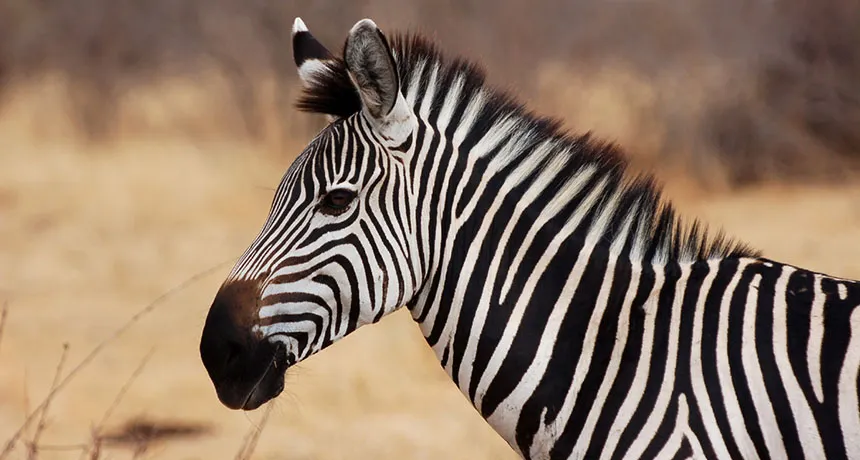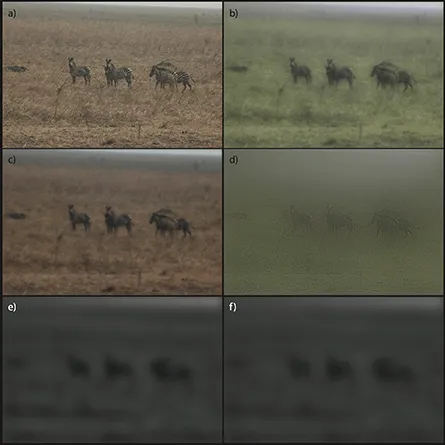Purpose of zebra stripes remains a mystery

Scientists have been arguing about the purpose of zebra stripes since the 1800s. They still don’t have a good answer for why the patterning evolved.
paulshaffner/Flickr (CC-BY 2.0)
- More than 2 years ago
Why does a zebra have stripes? People who live near the African animals have probably been asking that question for quite a long time. Since the 1800s, scientists have come up with four main hypotheses: The stripes act as some sort of camouflage against predators, are a way to reinforce social bonds among zebras, defend against parasites or help to cool the animals.
The camouflage idea has probably been debated the longest, with some scientists positing that in the dawn and dusk, when most predators hunt, the stripes merge into a gray tint that makes them difficult to see at a distance. Others, including Charles Darwin, have been skeptical that stripes could, at any time, confer protection.
What has been missing from this discussion is knowledge about what a zebra actually looks like to a predator. Human vision is different from that of nonprimates. What appears to be a distinct black-and-white pattern to us may not appear that way to a lion. So Amanda Melin of the University of Calgary in Canada and colleagues applied spatial and color filters to zebra images to simulate how lions and spotted hyenas — two big zebra predators — see zebras. They also created a filter that mimicked zebra vision to understand how the animals see each other. And they compared this all to human vision. The study appears January 22 in PLOS ONE.
In daylight, humans have the best vision of all four animals, but all can see the stripes on a zebra’s back fairly easily. A person with with 20/20 acuity can see the stripes from about 180 meters away. Zebras can see each other from 140 meters distant, and lions and spotted hyenas need to get within 80 meters and 48 meters, respectively, to distinguish the stripes on their prey.
In the dimmer light of dawn and dusk, everyone needs to get a bit closer to see the stripes, but they’re still most distinct to the human eye. It’s only in the dark of night that the stripes mostly fade into gray for all four species.
The research team then compared images of zebras with those of unstriped, brownish prey species — waterbuck and topi — that had been run through the lion-vision filter. The outline of the zebras was clearly visible against a savannah background. And the grayish animal that appeared when the zebra’s stripes merged together was actually a bit more visible than brownish species. In a forest setting, the black-and-white stripes blended in better with the dark branches and trunks, but zebras don’t spend a lot of time in this type of habitat.

The only time that the stripes can work as camouflage, the researchers concluded, is when a zebra is standing still in a forest and a predator is close enough to distinguish the stripes. But if a lion or hyena is that close, it could easily smell or hear a zebra as it moves or even breathes. (“They are particularly noisy herbivores,” the researchers note.) Since that situation would be rare, and stripes actually make it easy for predators to see zebras from pretty far away, stripes can’t be providing camouflage.
So why are zebras striped? Melin and colleagues argue that the social recognition hypothesis is “improbable” but can’t be completely ruled out since zebras can see the stripes better than their predators. However, there is no evidence from field observations to support this idea, and domestic horses, close relatives of zebras, are able to use visual cues other than stripes to recognize each other.
The research team argues that the antiparasite hypothesis looks most likely out of the four main explanations for stripes. This hypothesis got a boost a couple of years ago from a group led by Tim Caro at the University of California, Davis, that found that flies prefer landing on solid colors over contrasting stripes.
But, not so fast, says another group of researchers led by Brenda Larison at the University of California, Los Angeles. Those researchers argued last year in Royal Society Open Science that the stripes help with thermoregulation and don’t work as camouflage or a deterrent to parasites.
Where does that leave us? Exactly where we’ve been for the last couple of hundred years. We still don’t know why zebras have stripes. Perhaps the reason the patterning evolved truly is one of those four hypotheses that have been bandied about. Or maybe it’s something completely different. Only time — and more science — will tell.







